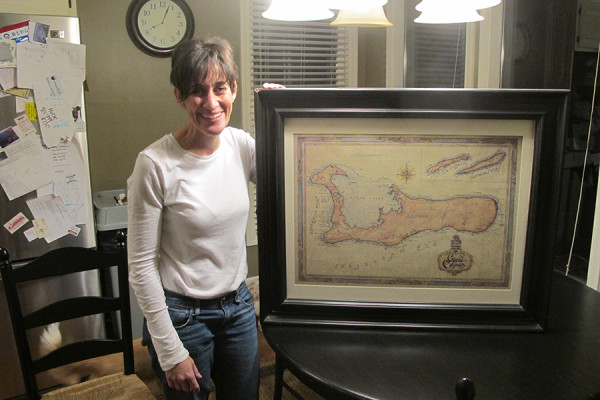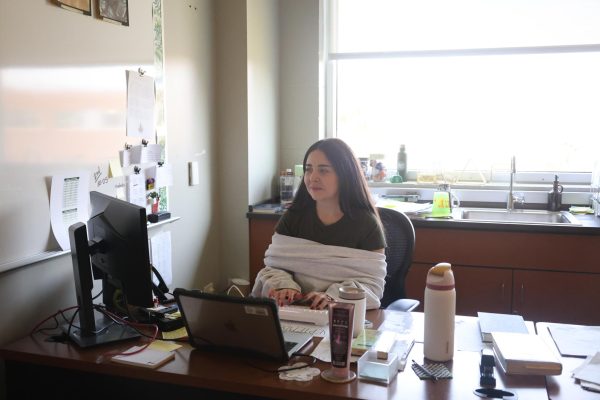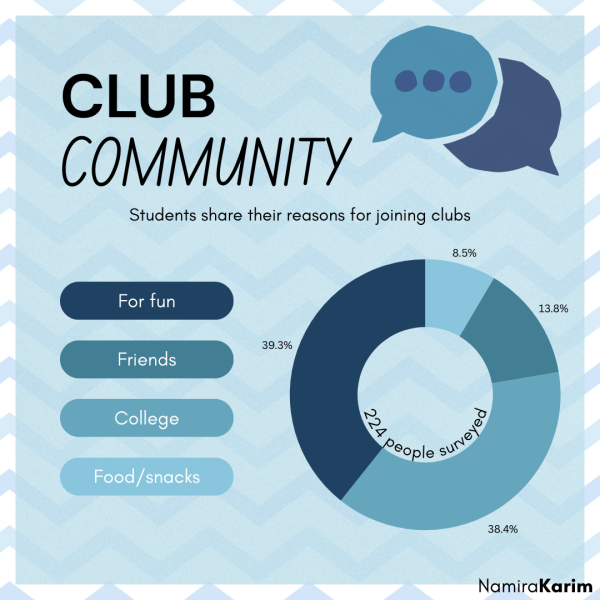Growing up in the Caribbean
Cathy Schrag stands in front of her map of Grand Cayman, the largest island of the Cayman Islands.
The rolling grass, the bright blue sky, and the smell of unpackaged beef: these were the first impressions Cathy Cridland (now Schrag) met in Kansas after moving from Jamaica. Newly out of high school, Cathy had moved from Jamaica to go to college in Emporia. She was born in Jamaica and lived both there and the Cayman Islands for the entirety of her childhood; now she lives in Overland Park, Kansas, raising her three kids at Southwest with her husband.
The Cayman Islands’ website shows basic information about the islands; the Cayman Islands are 102 square miles in area; Grand Cayman, the largest island and the one Cathy moved to, is only 76 square miles. The population, when Cathy lived there, was about 22,000: now, it is at 32,000. She is amazed at the growth.
The cost of living is expensive in the Cayman Islands because almost all of the houses are placed on beaches; they are generally the equivalent of a beach house in California.
“You live in paradise, but you pay a price,” Cathy said.
The Early Years and Schooling
Cathy was born in Jamaica; the deciding factor that prompted her family’s movement to the Cayman Islands was because in the 1970s, Jamaica was politically unsettled and very violent.
“The reason we moved was because my grandfather was actually killed. That sparked the move,” Cathy said.
After her early life in the Cayman Islands, Cathy moved back to Jamaica, where she went to an all-girls boarding school. In Jamaica, only the private schools were beneficial; it’s like a small town Kansas school because there weren’t many students to a class.
After high school, Cathy moved to Emporia for college. Why Kansas, of all places? “I went to a Catholic high school – a boarding school,” she said. “A few of the nuns were from Kansas. A Jamaican nun had also been to Emporia. And so they had a real affection for Emporia. The nuns just said, ‘Is anyone interested in going to college in Kansas?’ and I was like, ‘Oh, that sounds kind of different. It felt like an adventure.”
Different, it was. One of the first smells Cathy was met with was the potent odor of unpackaged beef. In Emporia, there was a beef plant that radiated pungency all over the small Kansas town. However, despite the less than welcoming odor, Cathy had made many new friends. Every holiday, she had a different friend’s family to celebrate with.
“There was not one holiday throughout the school year that someone didn’t invite me to come home with them,” Cathy said. “I went home with someone for Thanksgiving; I went home with somebody for Easter; all the holidays, I was always going home with someone.” She laughed. “I think they felt sorry for me. I think they thought I was being punished or something, and it’s like, ‘No, no, it’s fine; I really like it!”
Family and Culture
In Jamaica and the Cayman Islands, families are commonly intergenerational. Parents live with their children and they live with their children – the link continues.
“We are definitely more of a collectivistic culture,” Cathy said. “Which means that we really believe in our families. My grandmothers lived with us until they passed away.
Another aspect of the Caribbean that Cathy has inadvertently exercised on her husband, John, and their children is a concept she likes to call ‘soon come.’
“It’s like – say your toilet is broken,” Cathy began to explain. “You call the repairman, and he says ‘soon come.’ This can mean two hours or two days. We have a much more relaxed sense of time and getting things done. The whole view of the world is just more… relaxed. It’s definitely like – ‘No problem, man!’”
Daughter, Blue Valley Southwest junior Lainey Schrag, can attest to this.
“I grew up with both cultures,” Lainey said. “American and Caribbean. The Caribbean culture is laid back and slower. This is known as island time.”
Say, for example, an invitation for a party is said to begin at seven o’clock. In America, guests usually start showing up at six fifty or seven on the dot. In the Caribbean, guests start showing up around eight fifteen; even eight is considered ‘early’.
“It is really, sincerely, part of the culture,” Cathy said.
Citizenship
Cathy Cridland and John Schrag married in the 1990s. They had three children: Lainey, Nicholas, and Jack. Cathy realized – after five years of procrastinating – that it was time to become an American citizen.
“I’m a bit of a procrastinator, but my green card was expiring, so I studied and went for it,” she said.
Blue Valley Southwest sophomore and son Nick Schrag remembers when his mom was studying to become an American citizen. “She had to study a bunch of questions,” Nick said. “But, after she passed it, there was a block party and we made her a picture. She deserved it.”
Cathy equivalates her citizenship with pride. She is proud to be an American at the land of opportunities – the young college girl, awaiting a new future, has come full circle.
“I am proud I can be part of the [American] legacy with my kids.”





